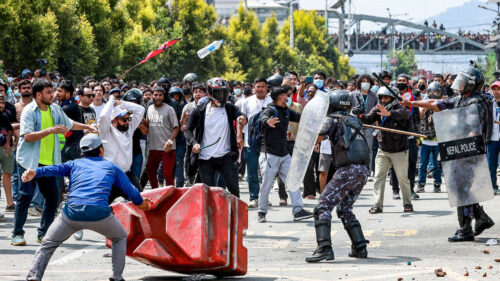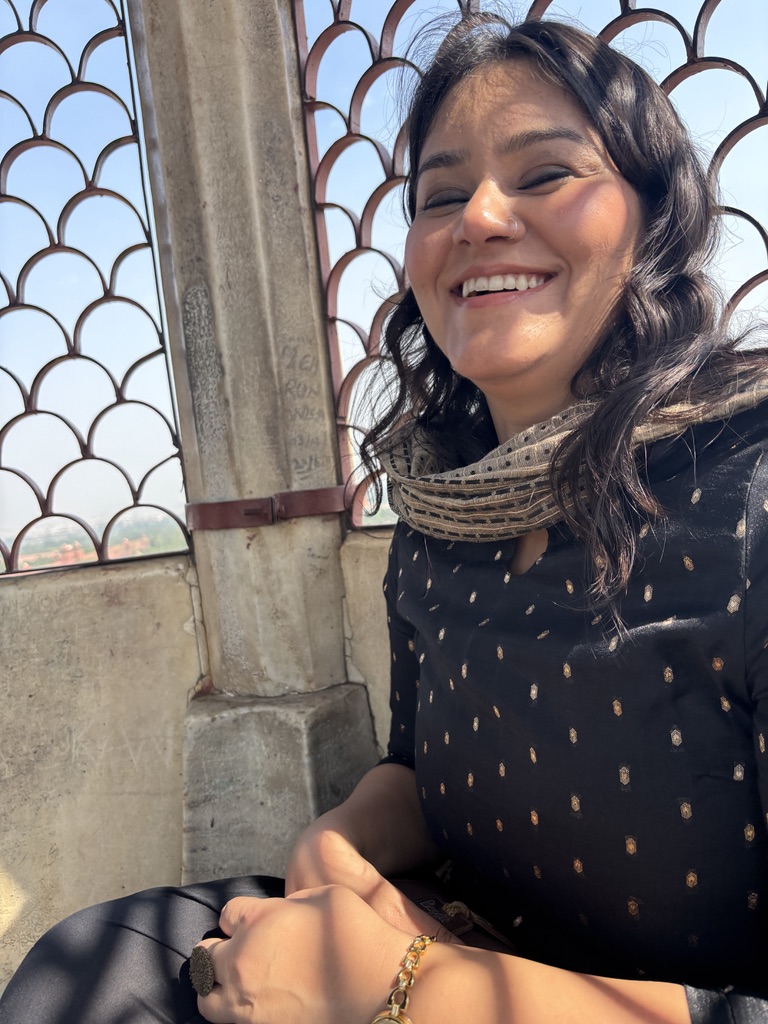
A Sudden Ban That Lit a Fire
On September 8, Nepal’s youth poured onto the streets of Kathmandu and other cities. Their demand was clear: revoke the government’s ban on major social media platforms. Facebook, Instagram, WhatsApp, YouTube, and X had been blocked after they refused to register with the authorities.
The ban became the spark, but the unrest had been building for months. Young protesters — many in school uniforms — stood outside Parliament. Some entered the complex, leading to police baton charges. At least 19 people were killed, hundreds injured, and large parts of Kathmandu were placed under curfew.
For the first time since Nepal became a republic in 2008, Gen Z had mobilized on the streets in such numbers. Organizers of the protests made it clear: no political party or youth wing was allowed to join.
Why The Government Banned Social Media?
Nepal’s government has been trying to regulate social media companies for over a year. Citing rising cybercrime, fake news, and harmful content, it passed rules requiring platforms to:
- Register with the government
- Appoint a grievance officer
- Remove posts flagged by authorities
Last month, the Supreme Court backed the government’s demand. When the deadline passed, 26 platforms were banned.
Some, including TikTok, Viber, WeTalk, Nimbuzz, and Poppo Live, avoided the ban by complying. TikTok itself had faced a ban in 2023 but returned after reaching an agreement.
Prime Minister K P Sharma Oli defended the crackdown. He said companies could resume services once they followed the rules. But critics argue the move is an attempt to curb expression and silence criticism.
PM Oli’s Reaction After the Protests
After the protests shook Nepal on Monday, Prime Minister Oli blamed “ambiguity between the thinking” of the country’s youth for the unrest. He called the demonstrations an “unpleasant situation” that caused deaths and destruction of state property.
In a statement, Oli said, “The lack of sufficient information regarding our efforts to register social media in a systematic manner as per the state law and court order, and some ambiguity between the thinking of our Gen-Z generation, has created the current situation.”
He insisted that the government was not against the use of social media, adding there was “no need to keep demonstrating for this.” Although the ban on Facebook, WhatsApp, X, and Instagram was lifted, protests continued in Kathmandu the following day.
What the Protests Reveal About Nepali Youth?
While the ban triggered outrage, it also reflected deeper anger. Nepal’s young population is frustrated with the same set of leaders, mostly in their 70s, who have rotated in power for decades.
Social media had given space to new political voices, such as Kathmandu’s mayor Balendra Shah, a former rapper, and Rabi Lamichhane, chief of the Rashtriya Swatantra Party. Both rose on digital platforms and supported the youth protests.
The protesters also used social media to challenge corruption. Online, terms like Nepo Babies and Nepo Kids trended, with young Nepalis posting images of powerful families and asking questions about privilege.
Economic Strain Behind the Anger
Nepal’s economy shows growth on paper, but daily realities tell another story. According to the World Bank, GDP grew 4.9% in the first half of FY25. But job creation is sluggish, inequality is widening, and opportunities are shrinking.
A staggering 82% of the workforce remains in informal jobs, well above global averages. Reliance on remittances sustains families but fuels migration. Every year, thousands of young Nepalis leave for work abroad.
The frustration is not only about jobs. Climate shocks, natural disasters, and frequent political churn have eroded trust in governance. Many young Nepalis feel their future is being stolen.
Corruption Scandals and Loss of Trust
Corruption has long clouded Nepal’s leadership. Since 2006, cabinet-level immunity has shielded politicians from investigations.
Some of the key allegations include:
- Prime Minister Oli accused of ignoring a Supreme Court order over land deals.
- Former PMs Madhav Nepal, Baburam Bhattarai, and Khil Raj Regmi linked to land scams.
- Pushpa Kamal Dahal Prachanda accused of diverting UN-monitored funds meant for Maoist fighters.
- Sher Bahadur Deuba accused of corruption in aircraft purchases, while his wife faces questions about a refugee fraud scandal.
These unresolved cases have deepened public anger. For many young Nepalis, the social media ban felt like the final attempt by leaders to hide from accountability.
What Lies Ahead?
The protests were organized by Hami Nepal, a youth group that positioned the rally as a fight against corruption and censorship. Its chairperson, Sudhan Gurung, said the ban “was the breaking point.”
The government has promised social media services will return if companies comply. But the anger on the streets is unlikely to fade quickly. A Bill to further regulate social media is set to reach Parliament soon, and it may trigger more unrest.
For Nepal’s Gen Z, the uprising was not just about accessing Instagram or YouTube. It was about demanding accountability, voice, and a future beyond recycled leaders and empty promises.
